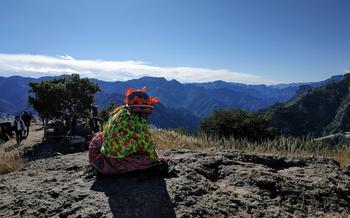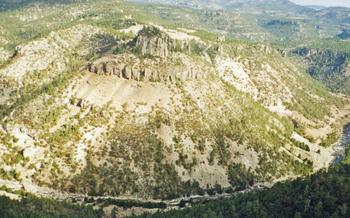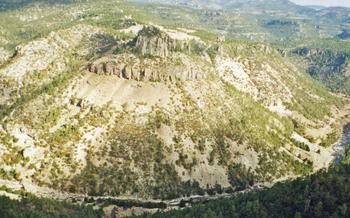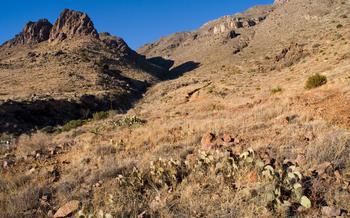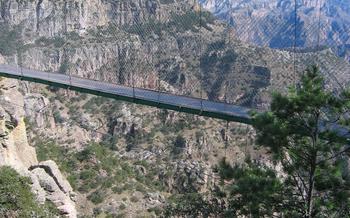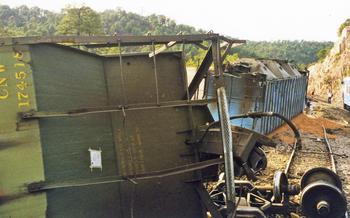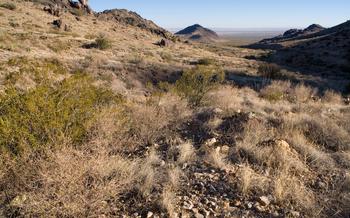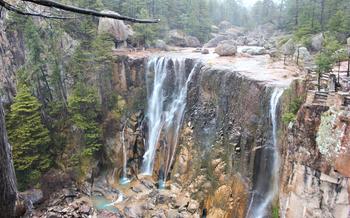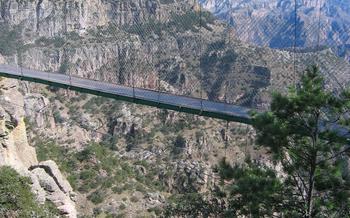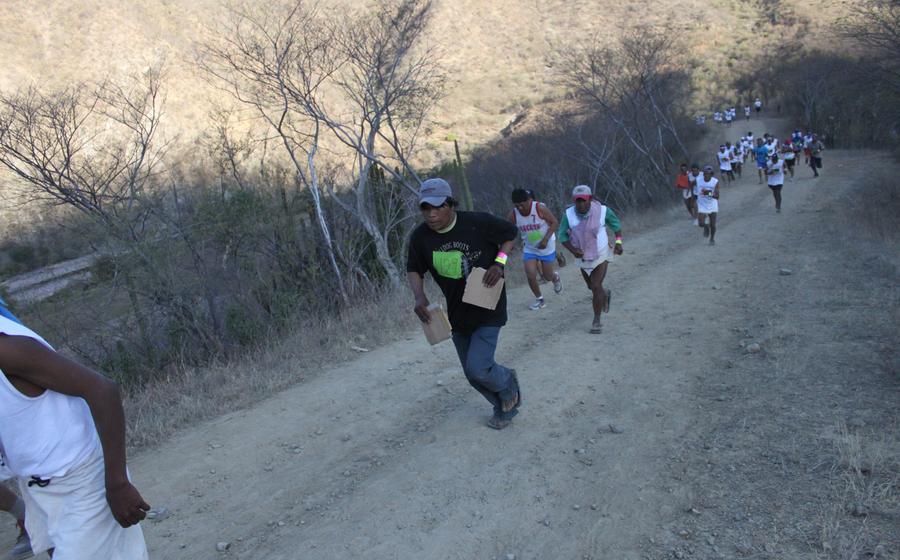
Cascada de Basaseachic
- The Copper Canyon
- Cascada de Basaseachic, a Natural Wonder
- Planning Your Visit
- Transportation Options
- Accommodation Choices
- Essential Packing List
- Hiking Trails
- Photography Tips
- Cultural Experiences:
- Local Cuisine:
- Souvenirs and Handicrafts
- Wildlife Spotting
- Nearby Attractions:
- Insider Tip: Embark on a Magical Night Hike
The Copper Canyon
Located in the southwestern part of Chihuahua, Mexico, the Copper Canyon is a vast network of canyons that rivals the Grand Canyon in size and grandeur. Spanning over 40,000 square kilometers, it encompasses a diverse landscape of deep ravines, towering cliffs, lush forests, and cascading waterfalls. Formed over millions of years by the relentless erosion of the Urique River and its tributaries, the Copper Canyon is a testament to the power of nature's sculpting abilities.
The region is also home to an extraordinary array of biodiversity, with over 6,000 plant species and 700 animal species calling it home. Among its most notable inhabitants are the Tarahumara people, an indigenous community renowned for their endurance and deep connection to the land. With their knowledge of the region's intricate trails and hidden gems, the Tarahumaras play a vital role in preserving the cultural heritage of the Copper Canyon.
Cascada de Basaseachic, a Natural Wonder
The Cascada de Basaseachic, nestled within the breathtaking Copper Canyon, stands as one of Mexico's most awe-inspiring natural wonders. This majestic waterfall, with a staggering height of 246 meters, is a testament to the power and beauty of nature. Formed over millions of years by the relentless erosive forces of the Basaseachic River, the waterfall plunges dramatically into a deep canyon, creating a mesmerizing spectacle. The surrounding landscape, adorned with lush vegetation and towering cliffs, further enhances the allure of this natural masterpiece. The thunderous roar of the cascading water and the mist that dances in the air create a symphony of sound and sight that leaves visitors in awe.
Planning Your Visit
When planning a trip to the Copper Canyon and the Cascada de Basaseachic, timing is crucial. The best time to visit is during the dry season, which runs from October to May. During this time, the weather is generally mild and sunny, with minimal rainfall. The waterfalls are at their most impressive during the rainy season, which lasts from June to September, but the trails can be slippery and muddy, making hiking more challenging.
The ideal duration for a trip to the Copper Canyon and the Cascada de Basaseachic is 3-5 days. This allows sufficient time to explore the region's natural wonders, including the waterfall, and to immerse yourself in the local culture. Several tour operators offer guided tours that cover the highlights of the region, including the Cascada de Basaseachic. These tours can be customized to suit different interests and budgets.
Visiting the Copper Canyon and the Cascada de Basaseachic requires a permit from the National Institute of Anthropology and History (INAH). The permit can be obtained online or at the INAH office in Creel. The cost of the permit is minimal and helps to support the conservation efforts in the region.
Transportation Options
Reaching the Copper Canyon and the Cascada de Basaseachic involves navigating a diverse terrain, and visitors have several transportation options to choose from. Air travel offers the quickest and most convenient way to reach the region, with airports in the nearby cities of Chihuahua and Los Mochis. However, the scenic beauty of the region is best experienced by embarking on a rail journey aboard the renowned Chihuahua al Pacífico train, known as "El Chepe." This iconic train meanders through the breathtaking landscapes of the Copper Canyon, providing panoramic views and a unique travel experience.
For those seeking a more adventurous approach, road trips offer the flexibility to explore the region at their own pace. The winding roads that lead to the Copper Canyon provide ample opportunities to stop and admire the stunning vistas. However, it's important to note that some roads may be rough and require a sturdy vehicle. Renting a car or hiring a guided tour with transportation included are popular options for road trips.
Ultimately, the choice of transportation depends on individual preferences, time constraints, and budget. If time is of the essence, air travel is the best option. For those who want to immerse themselves in the region's scenery and enjoy a unique train experience, "El Chepe" is highly recommended. And for adventurers who relish the freedom of the open road, a road trip offers the flexibility to explore hidden gems and create unforgettable memories.
Accommodation Choices
When planning your trip to the Copper Canyon and the Cascada de Basaseachic, choosing the right accommodation is crucial to enhance your overall experience. The region offers a range of options to cater to different budgets, comfort levels, and preferences.
For those seeking a rustic charm, there are cozy cabins and lodges nestled within the canyon's breathtaking landscapes. These accommodations provide a unique opportunity to immerse yourself in the natural beauty of the surroundings. However, it's essential to note that amenities may be limited, and reservations are often necessary, especially during peak tourist seasons.
If you prefer a more luxurious experience, several resorts and hotels are located near the Copper Canyon and the waterfall. These establishments offer modern amenities, comfortable rooms, and stunning views of the canyon. Booking in advance is recommended to secure your preferred accommodations and avoid disappointment.
For budget-conscious travelers, hostels and guesthouses are available in the nearby towns of Creel and Divisadero. These options provide a social atmosphere and a chance to meet fellow travelers while keeping your expenses in check.
When selecting your accommodation, consider factors such as proximity to the waterfall, desired amenities, and budget. Whether you choose a rustic cabin, a luxurious resort, or a budget-friendly hostel, the Copper Canyon offers a range of options to make your stay comfortable and memorable.
Essential Packing List
When embarking on your journey to the Copper Canyon and the Cascada de Basaseachic, careful packing is essential to ensure a comfortable and safe experience. Consider the region's distinct climate and outdoor activities when selecting your wardrobe.
Clothing: Opt for lightweight, breathable fabrics that are suitable for warm weather. Long-sleeved shirts and pants are recommended for sun protection and protection against insects. A raincoat or poncho can be handy for unexpected showers.
Footwear: Sturdy hiking boots or shoes with good ankle support are a must for navigating the rugged terrain. Flip-flops or sandals are not suitable for hiking but can be worn for casual wear.
Sun Protection: The sun's intensity in the Copper Canyon can be intense, so pack sunscreen with a high SPF, sunglasses, and a wide-brimmed hat to protect yourself from harmful UV rays.
Camera Equipment: If you're passionate about photography, bring your camera along to capture the stunning scenery. A tripod can help stabilize your shots, especially when photographing the waterfall.
Binoculars: Enhance your wildlife viewing experience by packing a pair of binoculars. They will allow you to observe birds, animals, and the intricate details of the canyon from a distance.
Additional Items: Don't forget to bring a refillable water bottle to stay hydrated during your hikes and a first-aid kit for minor emergencies. If you plan on camping, pack a tent, sleeping bag, and cooking utensils.
Hiking Trails
The Copper Canyon offers a network of well-maintained hiking trails that lead to breathtaking viewpoints of the Cascada de Basaseachic and the surrounding landscapes. These trails vary in difficulty and length, catering to hikers of all levels.
For a leisurely stroll, opt for the easy trail that leads to the base of the waterfall. This relatively flat path offers stunning views of the cascading water and the lush vegetation along the canyon walls. The trail takes approximately 30 minutes to complete and is suitable for hikers of all ages.
If you're up for a more challenging hike, tackle the moderate trail that ascends to the rim of the canyon. This trail offers panoramic views of the waterfall and the vast expanse of the Copper Canyon. The hike takes about 2-3 hours and requires a good level of fitness.
For experienced hikers seeking an unforgettable adventure, the strenuous trail leading to the top of the waterfall is a must-do. This challenging hike takes approximately 4-5 hours and involves steep climbs and rugged terrain. However, the breathtaking views from the summit are well worth the effort.
Guided hikes are available for those who prefer to explore the Copper Canyon with a knowledgeable local guide. These guides can provide insights into the region's history, geology, and flora and fauna, making the hike even more enriching.
Photography Tips
Capturing the beauty of the Cascada de Basaseachic and the surrounding landscapes through photography requires skill and the right techniques. Here are some tips to help you capture stunning images:
-
Lighting: The best time for photography is during the golden hours, just after sunrise or before sunset, when the warm light enhances the colors and textures of the waterfall and the canyon.
-
Tripod: A sturdy tripod is essential for ensuring stability and avoiding camera shake, especially when using slow shutter speeds to capture the flowing water.
-
Camera Settings: Experiment with different shutter speeds to achieve the desired effect. Use a slow shutter speed to create a sense of motion in the waterfall or a faster shutter speed to freeze the water in mid-air. Adjust the aperture to control the depth of field and focus on specific elements of the scene.
-
Composition: Consider the composition of your shots carefully. Experiment with different angles and perspectives to create dynamic and visually appealing images. Look for leading lines, such as the cascading water or the canyon walls, to draw the viewer's eye into the photograph.
Cultural Experiences:
The Copper Canyon region is home to a diverse array of indigenous communities, each with its unique traditions and cultural heritage. The Tarahumara people, also known as the Rarámuri, are one of the most prominent indigenous groups in the area. Renowned for their long-distance running abilities, the Tarahumara have a deep connection to the land and a rich cultural heritage that has been passed down through generations.
To immerse yourself in the local culture, consider visiting one of the many Tarahumara villages nestled in the canyons. Here, you can interact with the local people, learn about their way of life, and witness their traditional ceremonies. You can also support local artisans by purchasing their handmade crafts, which showcase the region's vibrant cultural heritage.
Attending a local festival is another fantastic way to experience the unique culture of the Copper Canyon. These festivals often feature traditional music, dance, and food, providing a glimpse into the region's rich cultural traditions. By immersing yourself in the local culture, you will gain a deeper appreciation for the diversity and beauty of the Copper Canyon.
Local Cuisine:
The Copper Canyon region boasts a distinct culinary identity, blending indigenous ingredients with traditional cooking techniques. The Tarahumara people, who have inhabited this land for centuries, have a rich culinary heritage that revolves around locally grown crops, wild herbs, and game.
A must-try dish is "machaca con huevo," a hearty breakfast consisting of dried beef, scrambled eggs, and tortillas. The dried beef, or "machaca," is a specialty of the region, made by salting and drying thin strips of beef in the sun. It is then shredded and cooked with eggs and spices, creating a flavorful and protein-packed meal.
Another local delicacy is "caldo de queso," a comforting cheese soup that showcases the region's dairy traditions. Fresh cheese curds are simmered in a flavorful broth made with tomatoes, onions, and garlic, resulting in a silky and savory soup that is often served with tortillas or bread.
For those seeking an authentic dining experience, local restaurants and markets offer a taste of the region's culinary delights. Visitors can sample traditional dishes made with fresh, seasonal ingredients, often grown by local farmers or foraged from the surrounding mountains.
Whether savoring the flavors of "machaca con huevo" or indulging in a bowl of "caldo de queso," the Copper Canyon region offers a unique and delicious culinary journey that celebrates the rich cultural heritage of the Tarahumara people.
Souvenirs and Handicrafts
The Copper Canyon region is renowned for its vibrant handicrafts and souvenirs, reflecting the rich cultural heritage of the Tarahumara people. Their intricate craftsmanship shines through in woven baskets adorned with colorful patterns, handcrafted pottery featuring unique designs, and exquisite jewelry made from natural materials. These handmade products showcase the skill and artistry of the local artisans, who have preserved their traditions for generations.
Supporting local artisans by purchasing their handicrafts is a meaningful way to not only take home a piece of the Copper Canyon's culture but also contribute to the economic well-being of the community. Visitors can find these beautiful souvenirs in local markets or directly from the artisans themselves, ensuring that their purchases directly benefit the creators.
Whether it's a finely woven basket, a hand-painted ceramic piece, or a delicate silver necklace, these souvenirs serve as tangible reminders of the vibrant culture and artistry found in the heart of the Copper Canyon.
Wildlife Spotting
The Copper Canyon is home to a diverse array of wildlife, making it a paradise for nature enthusiasts. The region is particularly rich in birdlife, with over 300 species recorded, including majestic golden eagles, elegant blue-throated motmots, and colorful tufted flycatchers. Keep an eye out for these avian wonders as they soar through the canyons or perch atop towering cliffs.
Reptiles and mammals also thrive in the diverse ecosystems of the Copper Canyon. Look for slithering reptiles such as rattlesnakes and lizards basking in the sun on rocky outcrops. With a bit of luck, you might even spot a secretive jaguar, one of the most iconic and elusive predators of the region.
Remember to practice ethical wildlife viewing during your visit. Observe animals from a respectful distance, avoid disturbing their natural behaviors, and never feed or approach them. By doing so, you can help protect the delicate balance of the ecosystem and ensure that future generations can also enjoy the wonders of the Copper Canyon's wildlife.
Nearby Attractions:
Beyond the breathtaking Cascada de Basaseachic, the Copper Canyon region offers a wealth of other natural and cultural attractions to explore. Just a short distance away, the picturesque towns of Creel and Divisadero beckon with their scenic vistas and rich cultural heritage. Creel, nestled amidst the towering Sierra Madre Occidental mountains, serves as a gateway to the region's many wonders. Its cobblestone streets, charming shops, and lively atmosphere make it an ideal base for exploring the area.
Perched on the edge of the canyon, Divisadero offers unparalleled views of the vast Barrancas del Cobre. Here, visitors can marvel at the sheer cliffs, rugged peaks, and verdant valleys that make up this awe-inspiring landscape. Whether you choose to hike along the scenic trails, ride the iconic Chihuahua al Pacífico train, or simply soak in the breathtaking views from the many lookout points, Divisadero promises an unforgettable experience.
The Copper Canyon is also home to several other stunning waterfalls, each with its unique charm. The Cascada de Cusárare, located near the town of Batopilas, is a hidden gem known for its cascading waters and lush surroundings. The Cascada de Urique, nestled deep within the Urique canyon, offers a challenging but rewarding hike rewarded with breathtaking views of the waterfall and the surrounding countryside.
Exploring these nearby attractions will further enrich your journey through the Copper Canyon. Whether you seek adventure, relaxation, or cultural immersion, the region offers a diverse range of experiences that will leave you with lasting memories.
Insider Tip: Embark on a Magical Night Hike
For an unforgettable experience, consider embarking on a night hike to the Cascada de Basaseachic. As darkness envelops the canyon, the waterfall transforms into a mesmerizing spectacle. The cascading water glows under the moonlight, creating an ethereal atmosphere that is truly awe-inspiring. The night hike offers a unique perspective of the waterfall, allowing you to appreciate its grandeur in a completely different light. It's an experience that will leave you with lasting memories of the Copper Canyon's natural beauty. Just remember to bring a flashlight or headlamp for safety and to enhance your exploration of this hidden gem.
